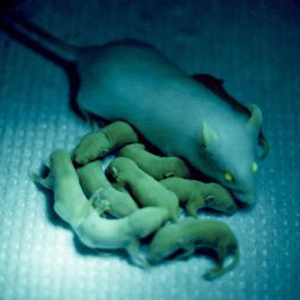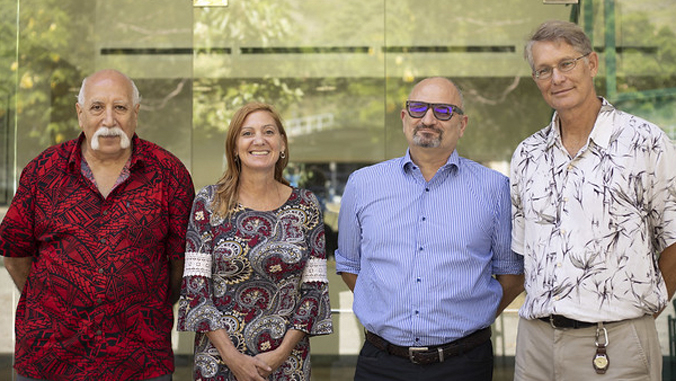The University of Hawaiʻi at Mānoa has received a $5.3 million grant to continue research at the laboratory that became world-famous for producing mice and other animals that glow green under ultraviolet light. This grant will allow the John A. Burns School of Medicine Institute for Biogenesis Research (IBR) to produce transgenic mice for other researchers seeking medical cures at UH.
The mouse and its pups glowed green because jellyfish genes had been inserted into a mouse embryo to demonstrate the lab’s successful technique for inserting DNA from an unrelated organism into that of another animal. The first green mouse was born, and then she transferred the glowing gene to her pups.

“All along, we’ve been developing new technologies to make us even better,” said Steven Ward, IBR director. “With this grant, we’ll be able to build on our previous 10 years of research to provide genetically altered mice for anybody at UH. These are models that scientists can use for their research—mice with specific diseases or with a certain gene missing or with a gene present so the researchers can see what they can do with it.”
Since mice are the closest animals to humans for biological testing, Ward said, making better mouse models allows scientists to advance cures.
This is the third consecutive five-year funding award the IBR has been selected to receive.
The federal funding from the National Institutes of Health’s National Institute of General Medical Sciences will support collaborations between IBR, part of the UH Mānoa John A. Burns School of Medicine, and its reproductive biology departments of anatomy, biochemistry and physiology and obstetrics, gynecology and women’s health.
For more go to the John A. Burns School of Medicine website.
—By Tina Shelton


